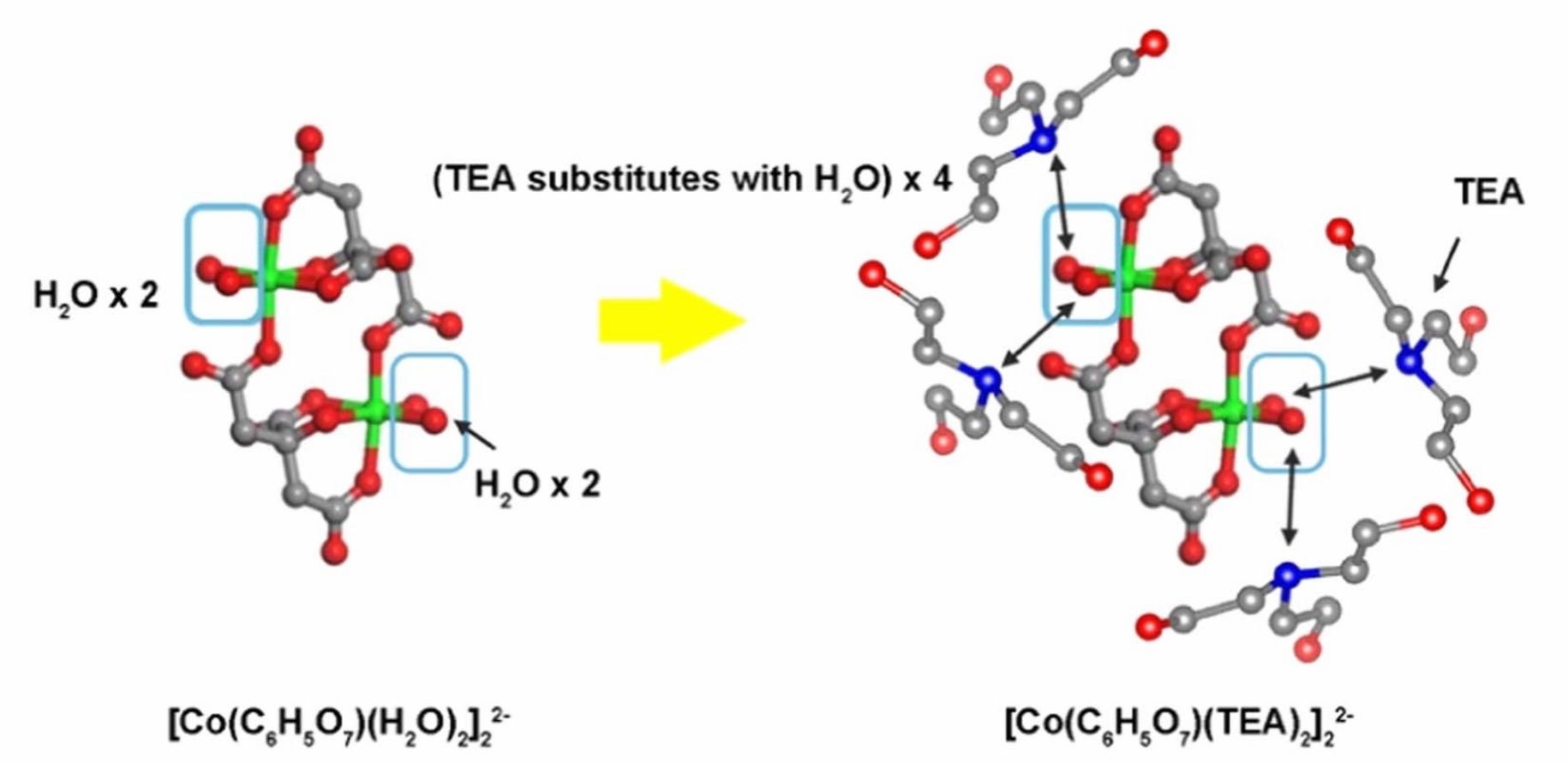
Yu Shen, Jiayi Guo, Lu Wang, Huizhen Han, Yi Ma, Bo Xin* and Zenglin Wang*. J. Electrochem. Soc., 2023, 170, 112503.
In chip packaging technology, the interconnection between narrow process chips can use cobalt metal materials with stronger conductivity. Conventionally, sodium hypophosphate, sodium borohydride, dimethylaminoborane, etc. are widely used as the reductive reagents for electroless cobalt plating while the impurities such as boron or phosphorus are inevitably introduced during codeposition process, which leads to an increase in the resistivity of the cobalt metal film. Alternatively, hydrazine is found to be a useful reductant to get rid of the impurity contamination. However, the deposition rate is relatively low for the weak reduction ability of hydrazine, which cannot meet the requirements of efficient scale-up process. In this study, adding triethanolamine (TEA) as an accelerator to the electroless cobalt plating can significantly increase the electroless deposition rate of cobalt plating by five times (from 1.0 μm·h-1 to 5.0 μm·h-1), and can be extended to apply to through-silicon vias (TSVs) below 10 nm.

It is also found that the acceleration mechanism of TEA can be explained by the addition of strongly coordinated TEA, which replaces H2O on [Co(C6H5O7)(H2O)]22- complex, forming [Co(C6H5O7)(TEA)2]22- due to TEA’s stronger coordination capability (Fig.1). Since TEA molecule has three long chains, the resultant strong steric-hindrance protects the central Co2+ from passivation so as to accelerate the reduction reaction of Co2+ citrate complex.
Additionally, we also systematically optimized the plating bath, further adjusting the concentration of cobalt ions and complexes in the plating solution, pH value, annealing temperature, etc., and obtained a dense, flat, and highly crystallized cobalt film with a resistivity of only 12.1 μΩ· cm.
First Author: Master's candidate Shen Yu, Shaanxi Normal University
Correspondence Authors: Prof. Wang Zenglin and Assoc. Prof. Bo Xin, Shaanxi Normal University
Full Text Link: https://iopscience.iop.org/article/10.1149/1945-7111/ad0a74